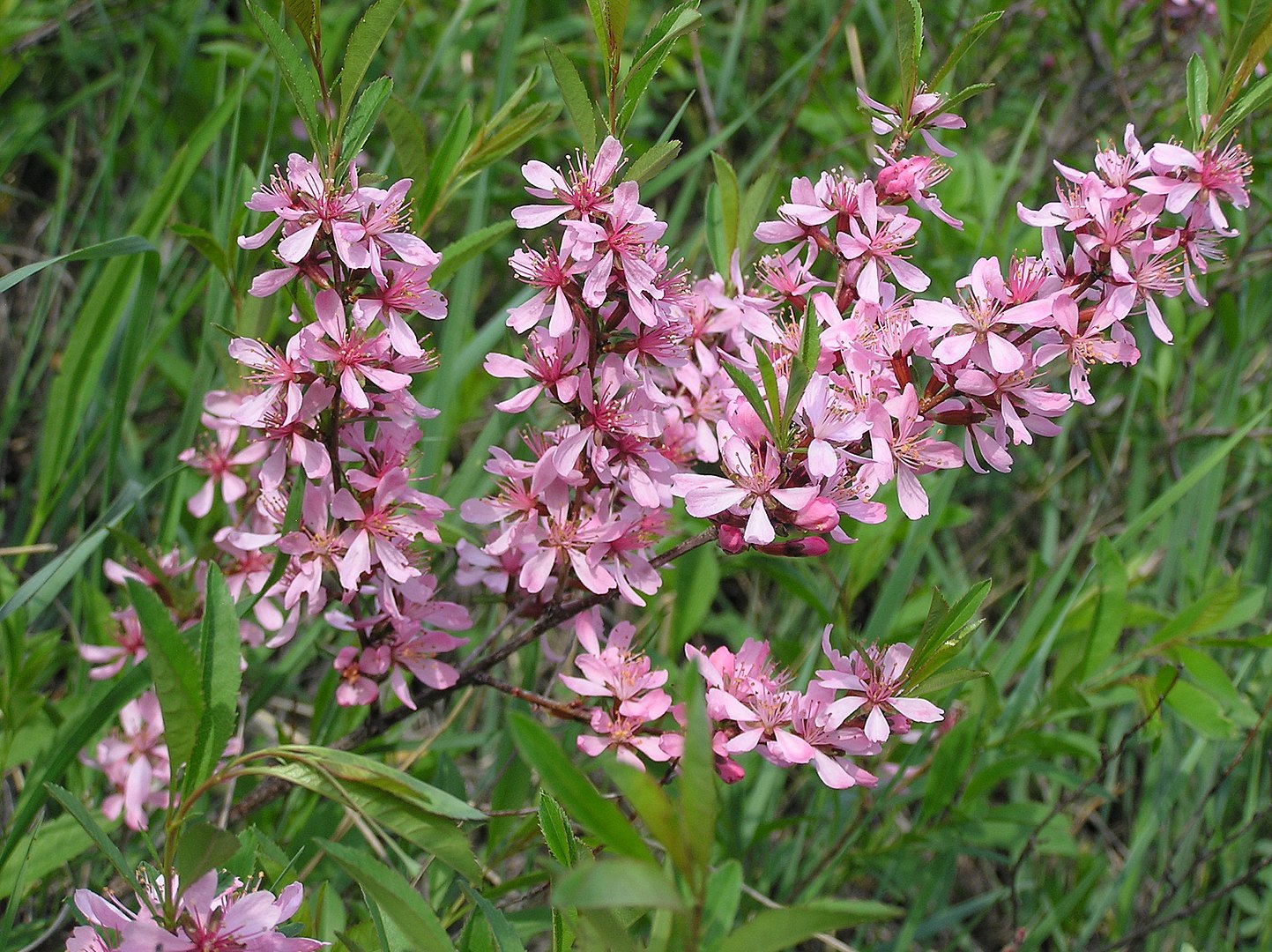Species and habitat description
0.3 to 1 m high shrub, extending with the root bud. Its thin, straight-up branches have many short offshoot. Young shoots are bald, green or yellowish-grey; the two-year-old have a dark grey, peridermal crevice. The buds are ovate, with scaled brown scales. The leaves are back-lanceolate or oblong-lanceolate, 2.5 to 6 cm long, tapering to a long shaft, blunt-pointed, finely serrated, bald and short-stemmed. Its peach-like five-petal flowers are mostly sitting on the side of last year’s long shoots. It blooms with the decay of foliage at the end of March and April. it fruit is round, approx. 2 cm in diameter, barely flattened on the side, yellowish-grey, long-haired, the shell opening at maturity, bony furrow. It ripens in August.
It is a continental-type Eurasian species, extending from the Lajta Mountains through the Caucasus to Western Siberia. The plant of the forest steppe. Lowland species.
It occurs sporadically in Hungary at the foot of the North Central Mountains, in the Transdanubian Mountains to the eastern part of the Bakony Mountains, in Southern Transdanubia (Tolna Mountains, Villány Mountains) and in several places in the Mezőföld and the Great Hungarian Plain.
It is a calcareous species, mostly leaving on loess, sometimes growing on sand or loam. A light-demanding plant, the dominant and characteristic species of the Loess Forest Steppe, a dwarf almond. It is usually found in loess steppe oak forests, shrub shrubs, on the edge of oak trees, on grassland slopes, bush forests, abandoned vines and grasslands. Potentially endangered species, living in small isolated populations today, are strongly suppressed by agricultural invasion. It is planted as an ornamental shrub.
Major threats
It is primarily endangered by the loss of its habitat, its degradation, its transformation / transformation and its utilization methods. During the breaking, grazing and mowing of loess grasslands, shrubs are eliminated. Replanting of vineyard is more common in warm, mountainous areas, where the original ecosystem is more or less destroyed. Areas that become closed forest as a result of self-afforestation or afforestation also lose species habitat. In case of shrubbery, scrub, loess steppe oak forests, the chewing, trampling and erosion damage of the overpopulated big game population living there is significant for most plant species, including dwarf almonds. In the spring, spectacular flowering shrubs are often collected by hikers (either as ornamental twigs or for transplanting into the garden).
Specific conservation action
Primary protection of existing individuals, populations and habitats.
In the case of lawns, only treatments that do not endanger the species can be performed. There is a need to completely avoid chemicals. When mowing, colonies of the species must be omitted. In case of grazing, individual or spatial protection of existing individuals may be warranted (electric fence, fence).
In non-cultivated areas, common shrub and herbaceous vegetation what endanger the dwarf almond may need to be mechanically suppressed.
Establishing and maintaining (at least 0.2-0.5 hectares) low-closing, patchy areas or clearings within tree-covered areas of suitable species for the species, providing the necessary microclimatic features (obviously for many other valuable, less common species can also be provided). Here, too, it may be necessary to suppress non-or less desirable herbivores and woody species (especially alien and invasive species).
Providing that certified, inbred dwarf almond propagating material is available, preferably from the same region of origin, may be replanted in appropriate production areas. In the case of reintroductions, it is expected that protection against game and grazing animals will be required.
Specific conservation action

Related project areas
Felsőtárkányi Miklós-völgy and Ostoros-völgy
Bibliography
Bollinger, Erben, Grau, Heubl: Cserjék. Illusztrálta:Hans Held, Ford.: B. Thúry Zsuzsanna. Budapest: M-érték Kiadó. 2005. 80–81. o. = Természetkalauz, ISBN 963 7304 12 6